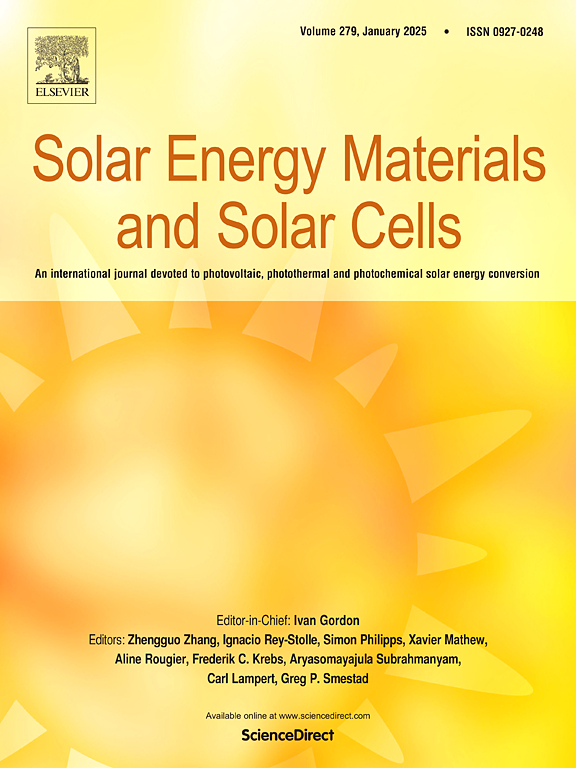热生长氧化物对落粒聚光太阳能高温表面侵蚀磨损的影响
IF 6.3
2区 材料科学
Q2 ENERGY & FUELS
引用次数: 0
摘要
由于侵蚀和磨损,特别是在高温下,组件材料的降解是第三代落粒聚光太阳能(CSP)系统发展中需要解决的一个挑战。本文研究了高温对氧化物生长的影响,并对几种结构材料(ss316、In800H和in718)的氧化生长进行了全面的侵蚀研究,这些材料用于系统部件。氧化层的形成、厚度和质量增益受退火温度和退火时间的影响较大。生长的氧化物被证明可以保护下垫面免受侵蚀磨损。与裸合金相比,SS316的腐蚀率降低了26 - 53%,In800H的腐蚀率降低了18 - 47%,In718的腐蚀率降低了41 - 65%,这取决于工作温度。在实验数据的基础上,建立了预测生长氧化物侵蚀速率随时间变化的解析关系式。用Arrhenius关系式描述了生长的氧化物在不同合金材料上随温度变化的稳态侵蚀速率。这项研究为氧化生长和磨损的竞争机制提供了深入的见解。它特别关注了落粒CSP系统高温运行期间氧化层的行为。本文章由计算机程序翻译,如有差异,请以英文原文为准。
Effects of thermally grown oxides on erosion wear of surfaces at high temperature for falling particle concentrating solar power
Degradation of component materials due to erosion and abrasion wear, particularly at high operating temperatures, is a challenge to be addressed in the development of Gen3 falling particle concentrated solar power (CSP) systems. This paper examines the impact of high temperatures on oxide growth and presents a comprehensive erosion study of grown oxides on several structural materials—SS316, In800H, and In718—for use in system components. The formation of the oxide layer thickness and mass gain are strongly influenced by the annealing temperature and duration. The grown oxides are shown to protect the underlying surface from erosion wear. The erosion rate is reduced by 26–53 % for SS316, 18–47 % for In800H, and 41–65 % for In718, compared to the bare alloys, depending on the operating temperature. An analytical relation is developed to predict the time evolution of the erosion rate of the grown oxides based on experimental data. An Arrhenius relationship is also presented to describe the temperature-dependent steady-state erosion rate of the grown oxides on the different alloy materials. This study provides insight into the competing mechanisms of oxide growth and wear. It specifically focuses on the behavior of oxide layers during the high-temperature operation of a falling particle CSP system.
求助全文
通过发布文献求助,成功后即可免费获取论文全文。
去求助
来源期刊

Solar Energy Materials and Solar Cells
工程技术-材料科学:综合
CiteScore
12.60
自引率
11.60%
发文量
513
审稿时长
47 days
期刊介绍:
Solar Energy Materials & Solar Cells is intended as a vehicle for the dissemination of research results on materials science and technology related to photovoltaic, photothermal and photoelectrochemical solar energy conversion. Materials science is taken in the broadest possible sense and encompasses physics, chemistry, optics, materials fabrication and analysis for all types of materials.
 求助内容:
求助内容: 应助结果提醒方式:
应助结果提醒方式:


